A Song that Never Ceases

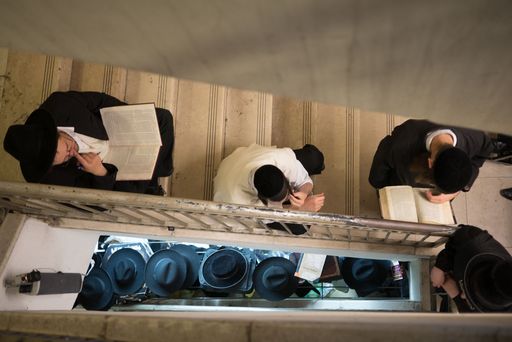
In a pocket of Jerusalem marked by narrow streets and sparse greenery lies a spiritual empire. It’s a pulsing organism, a patchwork of the Jewish nation, a universe all its own. Built with sweat and tears, watered with devotion and prayer, sustained by a force beyond nature. Filled with acclaimed giants, dotted with earnest strivers, enlivened by the most colorful characters. Mir Yerushalayim of 2014, captured in the course of twenty-four hours.

Morning
At eight in the morning, the Beis Yisrael neighborhood is slowly coming to life. Little boys and girls scurry off to school, laundry drips dry on the lines overhead, shop owners open their stores. Inside the local minyan factory, the “shtieblach,” the daily rotation of prayers is underway. But you can sense that the streets are waiting, twitching to the tick of an invisible clock. And then, just before nine, the flood begins. Stream after stream of men pour into the narrow streets, thousands of them. They stride purposefully, converging upon the seven stone buildings where they will spend their day engaged in the holiest of pursuits. Their voices will fill the neighborhood with life; their learning will fill its people with pride. It’s another morning in Yeshivas Mir, another chapter in the miraculous saga of the Jewish people’s survival.
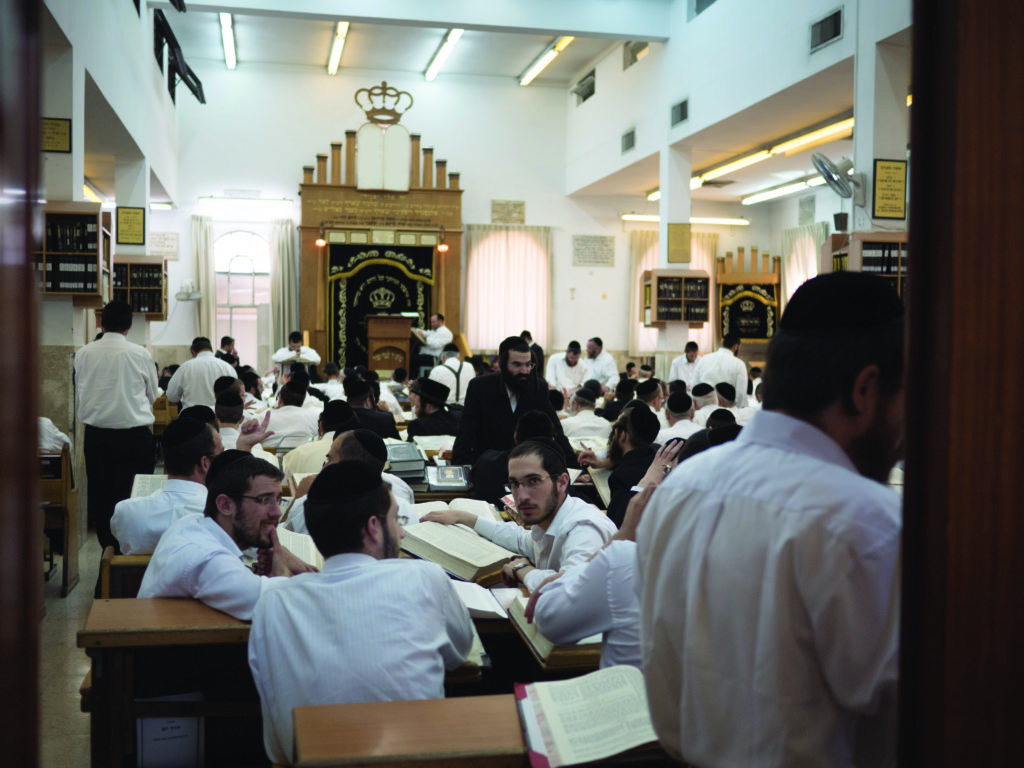
First Seder
The yeshivah takes its name from a Polish town. Its spirit was transplanted to the soil of Jerusalem by Rav Lazer Yudel Finkel ztz”l, who reestablished the yeshivah with an uncertain future ahead. From a small nucleus of talmidim, the yeshivah today is an empire counting over 8,000 . The flagship building still stands on its corner of Beis Yisrael and Shaarei Shamayim Streets, but six additional buildings stand alongside – the dreams - turned - reality of Rav Nosson Tzvi Finkel ztz”l, the previous rosh yeshivah who opened the gates of the yeshiva even wider, welcoming anyone who yearned to join. And join they did. Litvaks, Chassidim, Sephardim, Ashkenazim, Americans, Europeans, Australians, South Africans, and Israelis all find their home in the Mir, with a spectrum of shiurim and chaburos that branch in all directions of Torah growth. Diversity is part of the fabric; the desire to learn and grow is enough of a common denominator to override any surface differences.
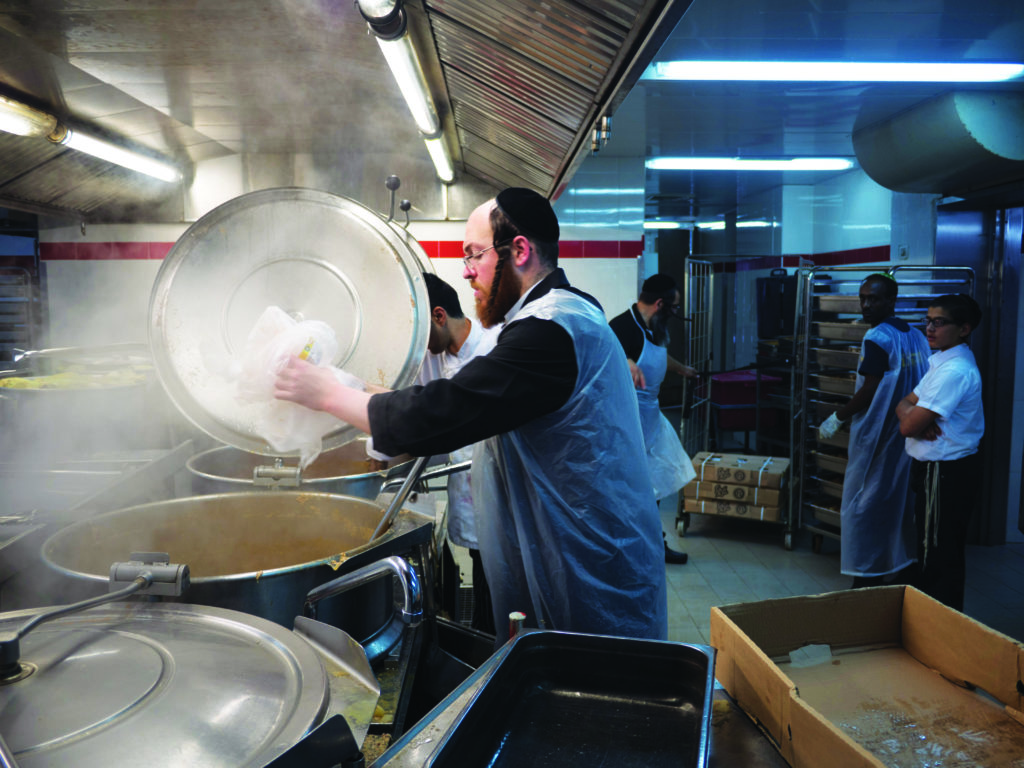
The Infrastructure/Neighborhood Workers
An operation of this scope requires vast and complex infrastructure.
The kitchen alone serves over 10,000 meals daily. Delivery trucks navigate the narrow streets with practiced efficiency, dropping off rice, oil, vegetables, and poultry to be transformed into hot, nourishing meals. As lunchtime draws closer, a crew of workers will wheel the food across the street into the dining room. In the yeshivah office, shelf upon shelf of binders pays silent witness to the thousands of students who’ve passed through the yeshiva. Outside, an assortment of artisans and workers lend their own color and sounds to the atmosphere. A glazier, woodworker, shoemaker, framing , iron worker, battim macher, atzei chaim manufacturer, bakery – their workers labor through the day against the backdrop of the Mir’s stone buildings, providing their own offbeat harmony to the timeless melodies sounded inside.
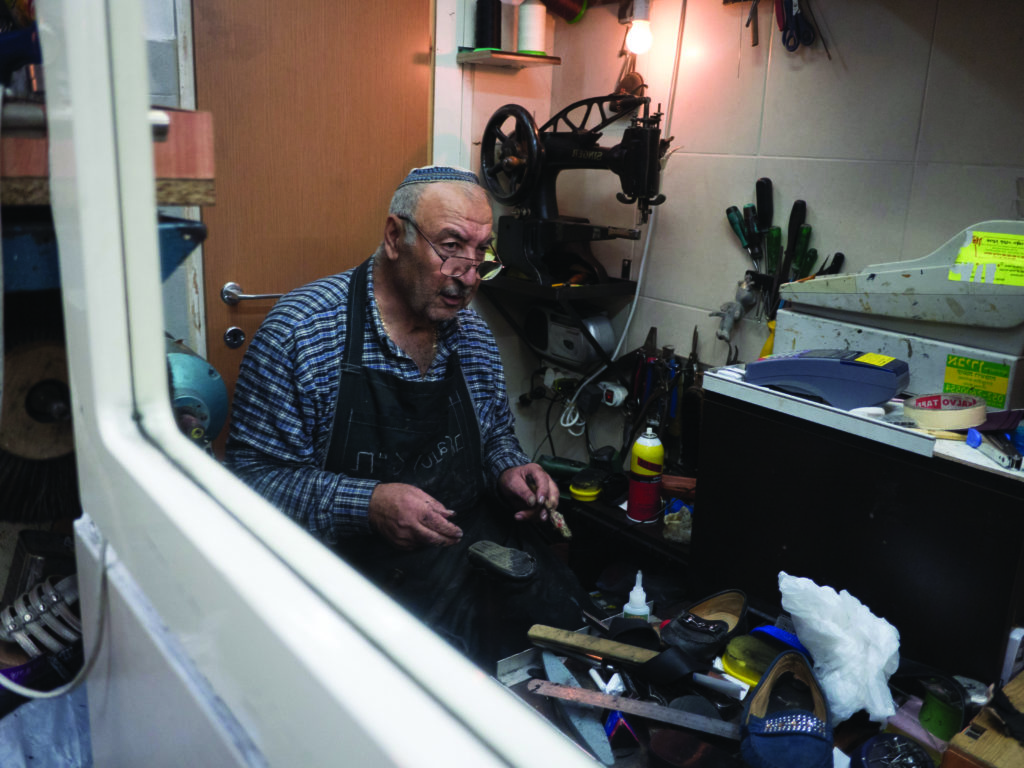
Bein Hasedarim
Like everything in the universe that is Mir, the bein hasedarim break has a flavor all its own. After lunch is served (in the past, it was famously served in shifts, with seats reserved for consecutive decades or passed from brother to brother over the years), nourishment of a different kind is offered at the “Next to the Mir Seforim Store.” After all, for the People of the Book, there’s no better way to relax from a morning of learning than…opening up a new sefer. The local barbers do brisk business during these off-hours, one famously selling cold drinks along with his craft, another identifying brothers by their shared hairlines, yet another who still relishes the relationship he formed with the revered Rav Nosson Tzvi ztz”l.
Once a week, the Mir hosts a sale of fresh produce at subsidized prices, and so many helpful husbands will slot some vegetable shopping into their Wednesday bein hasedarim, packing the cucumbers, sweet potatoes and zucchini into colorful plastic bags that they’ll stow in a corner somewhere, until it’s time to go home at the end of the day.
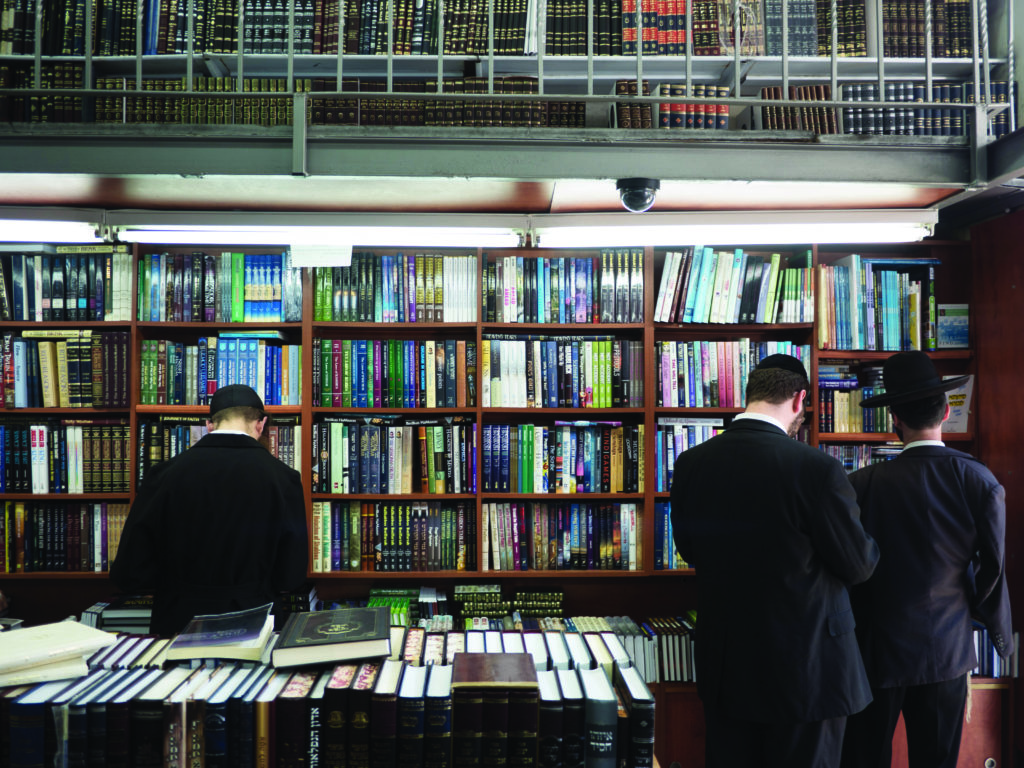
Second Seder, Rav Asher’s Shiur
In the subterranean former dining room of the Beis Shalom building , hundreds of people are waiting. They’ve crammed every available bench, every corner, even the individual stairs on the staircase. Pens ready, recorders primed, they’re waiting for a tall man with a once – red beard whose legendary shiur continues to rivet thousands and to shape new maggidei shiur.
Rav Asher Arieli , the son-in -law of Rav Nachum Partzovitz ztz”l, never seems hurried, even when he runs. With a standard short suit and gentle smile, he’s unassuming enough to almost blend into the Mir tapestry – until the daily shiur begins. Then he lets loose a waterfall of clarity, poetry almost, in a rich Yiddish that the most American of Americans strive to master, if only to gain entrée to his Torah. The faithful here have been attending for years, crafting their growing families’ schedules around it. Rav Asher’s shiur is just one of many that fill the hearts and minds at the Mir. Maggidei shiur like Rav Yosef Elefant and Rav Nissan Kaplan, among many others, draw followings of their own, and form connections that extend far beyond the shiur room.
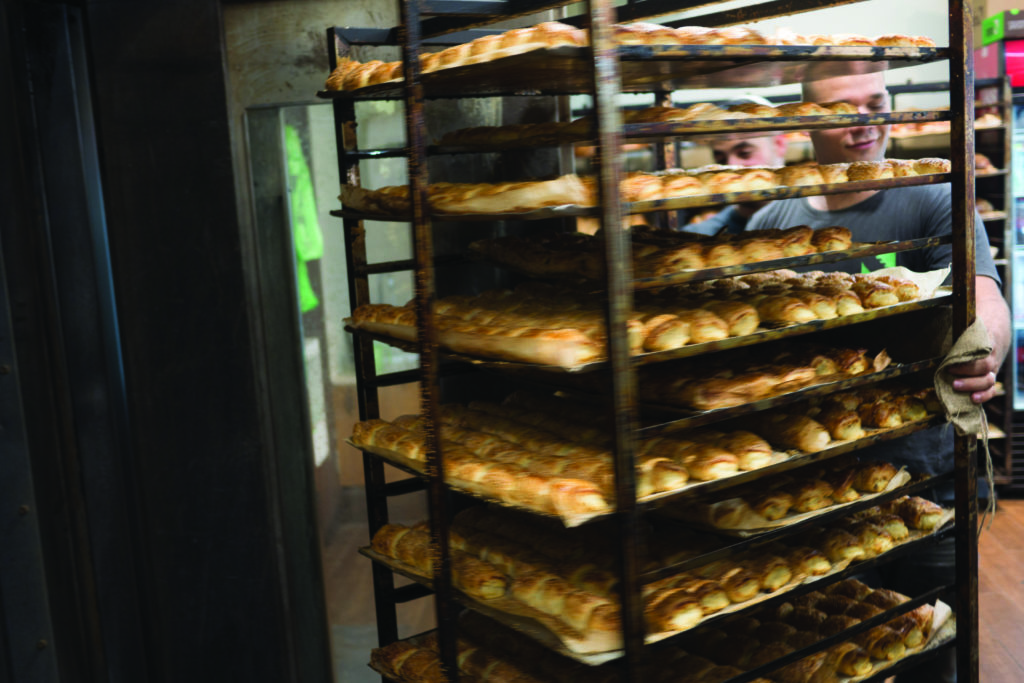
Heading Home/Evening
The yeshivah of Mir is a place of learning. But the universe of Mir is something of a full – service institution, and many waters find their way to the reservoir in Beis Yisrael. Several times a year , the yeshiva hosts a subsidized sale of chicken and meat. Men arrive at the distribution point with suitcases, luggage dollies, even strollers, and load up the cartons for the trip home. Zusha the florist visits every Thursday and Friday with barrels upon barrels of flowers .The Ackerman boys bring trays of their mother’s home – baked goodies for those bochurim hungry for a taste of home. There’s even a hat refurbishing expert who will sometimes set up shop outside yeshivah.
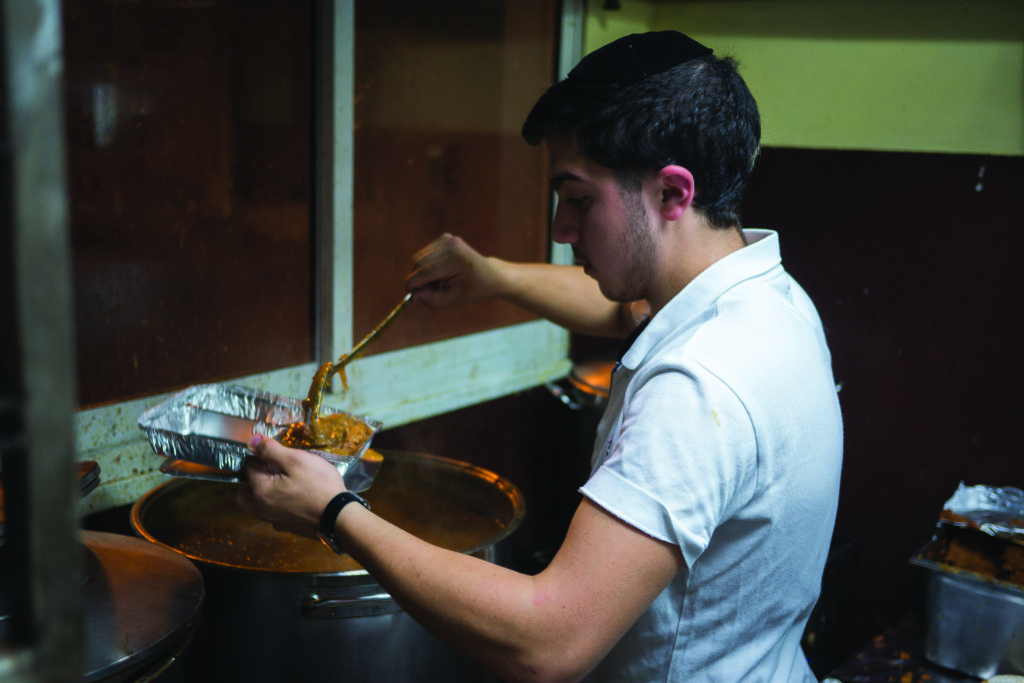
Nightime
Quiet has returned to Beis Yisrael, as the darkened streets grow empty. But if you look closely, listen carefully, life is still humming. For the bochurim living in the dormitory buildings and rented apartments on the narrow street s, there’s late-night cholent at a local takeout or a quick trip to the 24-hour Laundromat. As the velvety blackness inches away from the horizon and allows a little pink through, the workers at Nechama Bakery start wheeling out the coming day’s goods. And in a corner here, at a shtender there, the same tune can be heard. As the janitors bring buckets and mops to restore sparkle to the batei medrash, as the delivery trucks rumble closer with their bread and milk, as the Egged bus to the Kosel swings around the corner a block away, the song goes on. Because In this self-contained universe that is ever-changing and ever shifting, there is one precious thing that always stays the same.
(Originally featured in Mishpacha, Issue 530)
Oops! We could not locate your form.












